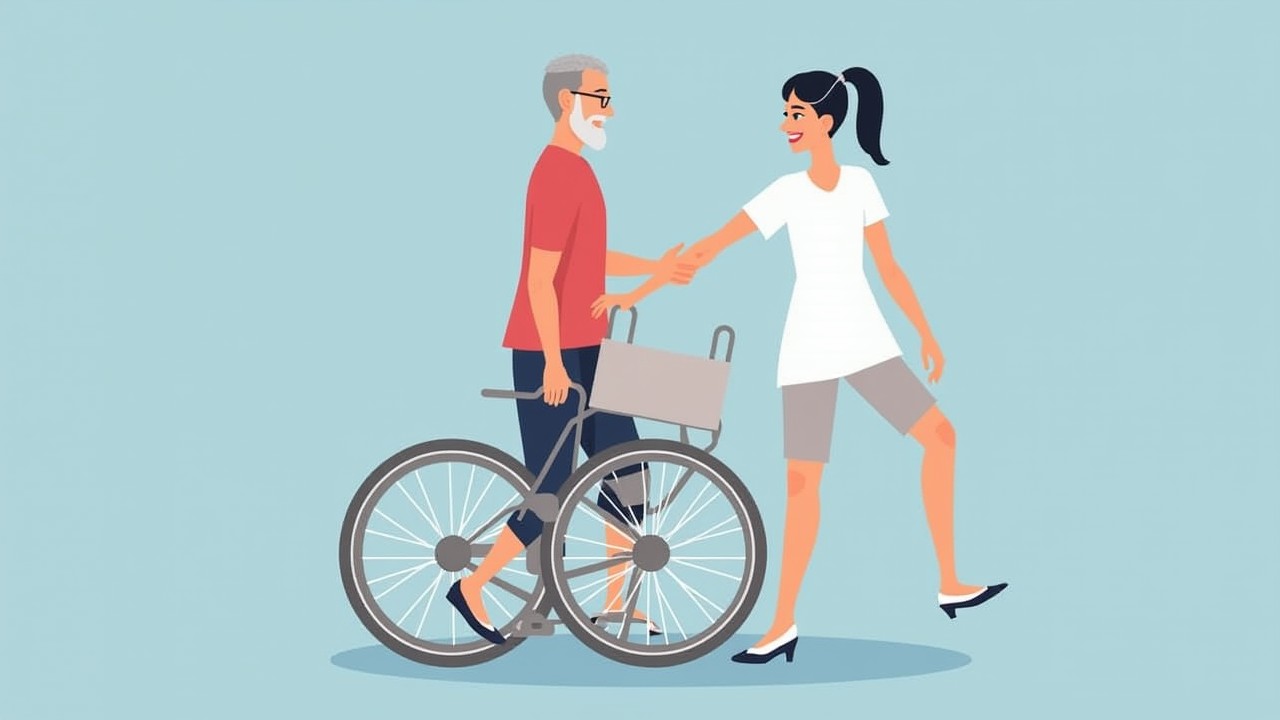Essential Mobility Support Tools for Aging Individuals

Mobility Tools to Support Senior Independence
As we age, maintaining mobility becomes increasingly crucial for preserving independence, safety, and overall quality of life. Many aging individuals face challenges such as reduced strength, balance issues, or chronic conditions that can limit their ability to move freely. Fortunately, there are mobility support tools designed to help older adults overcome these challenges and maintain an active, safe, and independent lifestyle.
In this guide, we'll explore the importance of mobility aids, discuss common types available, and offer tips for selecting the right tool to meet individual needs.
Why Use Mobility Support Tools?
Here are some key reasons why mobility aids are essential for older adults:
Enhancing Safety and Reducing the Risk of Falls: Falls are one of the leading causes of injury among older adults, with serious health consequences. According to the Centers for Disease Control and Prevention (CDC), over 14 million older adults—approximately 1 in 4—report falling each year, with about 37% of those falls resulting in injuries that require medical treatment or limit activity for at least one day. Mobility tools are essential in preventing these accidents. These devices provide added support and stability, helping older adults navigate various surfaces, maintain their balance, and reduce the likelihood of tripping or losing their footing.
Promoting Independence and Confidence: Mobility tools empower older adults to move independently, fostering a sense of freedom and control over their daily lives. The psychological benefits of being able to navigate their environment without relying on others include reduced feelings of helplessness, greater self-esteem, and improved mental well-being. For example, a senior using a walker may feel more confident attending social gatherings or running errands, as the device provides the necessary stability to move safely.
Aiding Recovery and Rehabilitation: Mobility tools play a crucial role in the recovery and rehabilitation of older adults, particularly during physical therapy and post-surgical scenarios. They help patients gradually regain strength, range of motion, and balance without risking further injury. For instance, after hip or knee surgery, a walker can assist in safe, controlled movement during the recovery process.
Common Types of Mobility Support Tools for Older Adults
Canes provide balance and support for individuals with mild mobility or stability challenges, typically offering assistance while walking. Lightweight and portable, they come in various styles, such as single-point or quad canes, depending on the level of support needed.
Walkers and Rollators
Walkers offer stability for those needing greater support, featuring a frame with four legs to prevent falls. Rollators are similar but include wheels and a seat for resting, making them ideal for individuals with limited mobility who need occasional breaks.
Wheelchairs
Wheelchairs allow older adults with limited or no ability to walk to move around independently or with assistance. They are available in both manual and powered versions, catering to varying needs in terms of mobility and ease of use.
Scooters
Mobility scooters are motorized devices designed for long-distance movement and outdoor use. They are ideal for older adults who can't walk far but want independence in navigating larger spaces, such as malls or parks.
Lift Chairs
Lift chairs resemble regular reclining chairs but include mechanisms to help users stand up and sit down effortlessly. These are particularly useful for individuals with limited strength or joint issues, aiding comfort and preventing strain.
Transfer Benches
Transfer benches make getting in and out of bathtubs or showers safer by providing a stable surface to sit and slide across. They are essential for fall prevention and ensuring more effortless movement during bathing.
Stair Lifts
Stair lifts are motorized seats installed along staircases to help older adults move between floors without climbing stairs. These tools are invaluable for maintaining accessibility in multi-level homes without exertion or risk of falls.
How to Select the Right Mobility Support Tool
Assess Individual Needs: It is essential to identify specific mobility challenges, such as balance issues, joint pain, or difficulty walking, as well as the daily routines and activities. Understanding these factors ensures the selected aid effectively supports their lifestyle. In addition, consulting with healthcare professionals is crucial, as they can provide expert recommendations based on the individual's medical conditions, physical capabilities, and rehabilitation goals to ensure the device meets their specific needs.
Consider Portability: Portability is a crucial factor, especially if the mobility tool will be used in various settings or during travel. Lightweight and foldable options, such as collapsible walkers or compact scooters, are ideal for easy transport and storage. Choosing a mobility tool that can be conveniently carried or packed ensures greater flexibility and adaptability for the user's lifestyle.
Think About Ease of Use: When selecting mobility aids for older adults, prioritize ease of use to ensure they can operate or assemble the device with minimal effort. Opt for aids that are simple to assemble or adjust and feature ergonomic designs, such as comfortable handles or intuitive controls, to improve usability and reduce strain. Simplicity in functionality helps older adults maintain independence and confidence in daily tasks.
Final Words
Choosing the right mobility support tools for aging individuals is essential to promote independence, safety, and overall well-being. By assessing individual needs, considering portability, and prioritizing ease of use, seniors can benefit from tools that seamlessly fit into their lifestyles. Consulting healthcare professionals ensures informed decisions tailored to specific conditions and routines. Thoughtfully selected mobility aids empower older adults to remain active and confident, thereby enhancing their quality of life.
Popular Products
-
 Classic Oversized Teddy Bear
Classic Oversized Teddy Bear$23.78 -
 Gem's Ballet Natural Garnet Gemstone ...
Gem's Ballet Natural Garnet Gemstone ...$171.56$85.78 -
 Butt Lifting Body Shaper Shorts
Butt Lifting Body Shaper Shorts$95.56$47.78 -
 Slimming Waist Trainer & Thigh Trimmer
Slimming Waist Trainer & Thigh Trimmer$67.56$33.78 -
 Realistic Fake Poop Prank Toys
Realistic Fake Poop Prank Toys$99.56$49.78